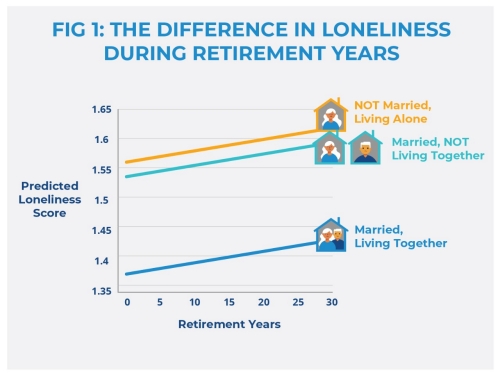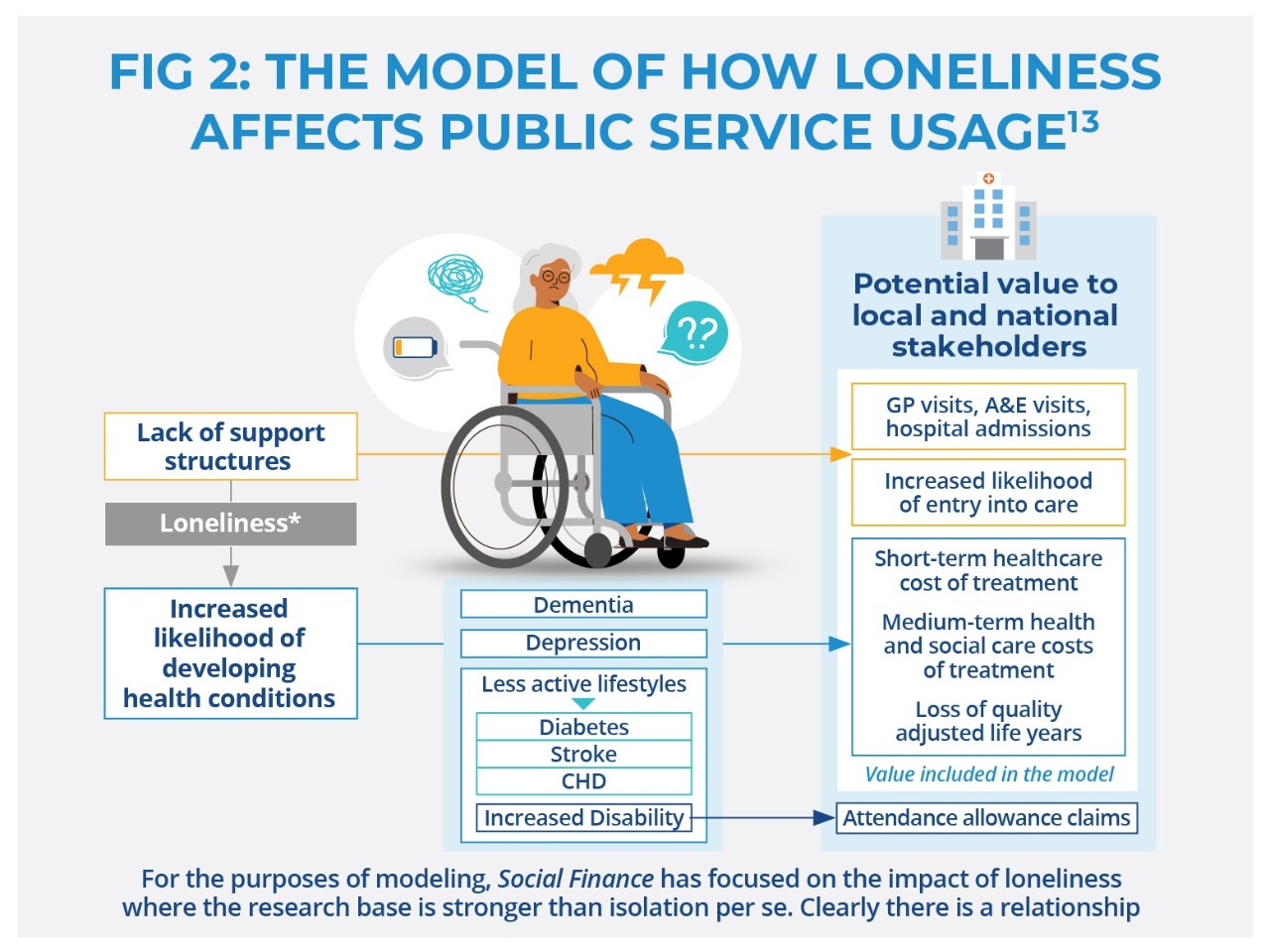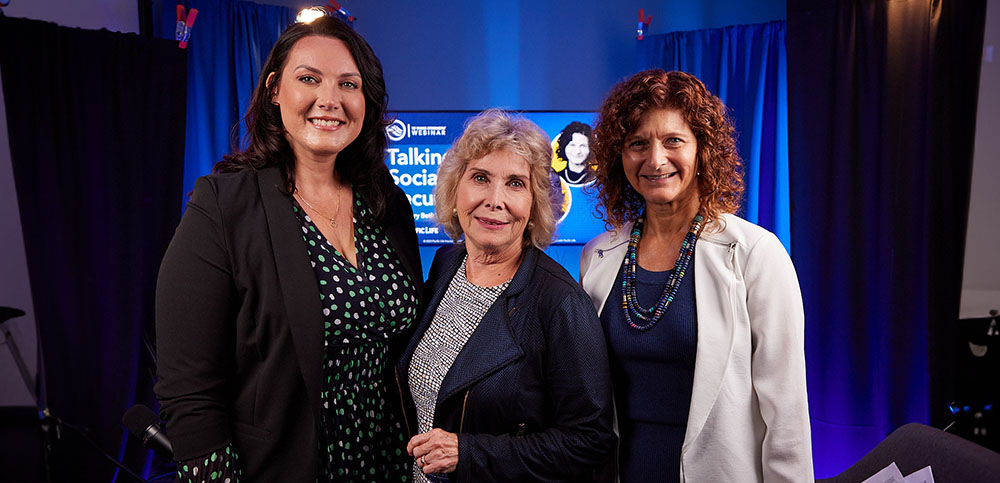Discover financial solutions that protect your future and provide peace of mind. Whether you're exploring annuities, life insurance, or understanding employee benefits through your workplace, Pacific Life offers resources and products designed to meet your personal and family goals.
Support your workforce with innovative employee benefits and retirement solutions. Pacific Life partners with business owners, benefits administrators, and pension fund managers to create customized programs that attract and retain top talent while securing their financial future.
Simplify complex retirement and pension risk management with our tailored solutions for large organizations. Pacific Life specializes in working with institutions to address their unique challenges, offering expertise in pension de-risking and strategic retirement planning for a more secure future.
Empower your clients with confidence by leveraging Pacific Life’s comprehensive portfolio of financial products. From annuities to life insurance, we provide the tools, resources, and support to help financial advisors and brokers deliver exceptional value and long-term results.
-
Individuals
Discover financial solutions that protect your future and provide peace of mind. Whether you're exploring annuities, life insurance, or understanding employee benefits through your workplace, Pacific Life offers resources and products designed to meet your personal and family goals.
-
Employers
Support your workforce with innovative employee benefits and retirement solutions. Pacific Life partners with business owners, benefits administrators, and pension fund managers to create customized programs that attract and retain top talent while securing their financial future.
-
Institutions
Simplify complex retirement and pension risk management with our tailored solutions for large organizations. Pacific Life specializes in working with institutions to address their unique challenges, offering expertise in pension de-risking and strategic retirement planning for a more secure future.
-
Financial Professionals & Brokers
Empower your clients with confidence by leveraging Pacific Life’s comprehensive portfolio of financial products. From annuities to life insurance, we provide the tools, resources, and support to help financial advisors and brokers deliver exceptional value and long-term results.
Executive Summary
Retirement loneliness is not only a social issue but also an economic burden that impacts healthcare costs, social care, productivity, insurance, and social welfare systems. Addressing this issue through effective policy changes can mitigate these economic costs and improve the quality of life for retirees.
Author: Qi Sun Ph.D., CFP®

BACKGROUND
- Scope of the Issue: Loneliness is not a problem solely associated with older adults. In fact, past studies have found that the relationship between age and loneliness follows a U-shaped curve, with the highest levels of loneliness reported during the teenage years and later stages of life. This unique relationship means that loneliness is more prevalent among retirees, leading to significant health and financial issues. Additionally, decreasing marriage rates among older Americans contribute significantly to loneliness. According to a report from the U.S. Census Bureau, among those aged 85 and older, 60% of men are married compared to only 17% of women. Figure 11 clearly shows that being single and living alone exacerbates loneliness the longer individuals remain in retirement.

- Lack of Research: The majority of existing loneliness research has been conducted in the UK and EU countries. As a result, the economic impact of loneliness in the U.S. is limited. Differences in the public health care system and the retirement systems are too dissimilar to draw comparative conclusions.
- Existing Interventions to Reduce Loneliness: Previous research has suggested various interventions to address the issue of loneliness. These include, but are not limited to:
- Providing high-quality training to facilitators who can help older adults make use of community resources2.
- Addressing maladaptive thinking patterns3.
- Conducting group interventions with focus groups based on participants’ background characteristics4.
However, it is difficult to identify the effectiveness of interventions due to the challenge of conducting randomized trials. Furthermore, without a quantified evaluation methodology, it is also difficult to determine the cost-effectiveness of these interventions. Consequently, there is a pressing need to enrich the existing body of research on loneliness, especially for the growing number of retirees. Raising public awareness and securing policy support are essential steps in addressing the issue of loneliness. By highlighting the significant impact of loneliness and advocating for evidence-based policies, we can create a supportive environment for our aging society. This will help ensure that older adults can enjoy a happier and more fulfilling retirement life.

WHY DOES LONELINESS CAUSE PROBLEMS?
Researchers have explained the mechanism by which loneliness causes negative consequences across various areas. According to the loneliness model5, perceived social isolation leads to hyper-vigilance for social threats and negative cognitive biases. This, in turn, diminishes self-regulation capability and causes psychological dysfunction. Both factors contribute to adverse changes in health behaviors and bodily functions. What has research discovered about the economics of loneliness?
1. Costs Associated with Unhealthy Lifestyle:
- Diminished self-regulation caused by loneliness is directly reflected in unhealthy lifestyle choices. One study found that, on average, a one-unit increase in loneliness is associated with a 10% reduction in the odds of engaging in physical activities across all intensity levels, as well as an increase of three cigarettes smoked per day. This increased smoking habit, in turn, displaces other major household expenditures, such as housing and healthcare products, while simultaneously increasing alcohol spending6. These changes further deteriorate the financial and physical health of older Americans.
2. Costs Associated with Increased Healthcare Utilization:
How loneliness increases health care utilization is mainly through the onset of new health problems and the need for social contact.
- Studies7,8 have found that loneliness and social isolation increase the risk of developing prevalent disabilities and chronic diseases. In fact, individuals with multiple chronic conditions are up to 50% more likely to face out-of-pocket medical expenses. These expenses can amount to as much as 80% of their social security retirement paycheck9.
- Chronic loneliness seems to have had a positive and significant effect on doctor visits and many of those doctor visits are for social connection support rather than solely medical treatment.
- Social isolation increases the usage of nursing homes, with Medicare spending an estimated $1,643 more annually on objectively isolated beneficiaries compared to those with greater social connections10. However, the same study noted that subjective feelings of loneliness create a barrier for individuals to utilize healthcare services. This reluctance to seek appropriate treatment can lead to temporary healthcare cost reductions but ultimately results in more significant long-term healthcare expenses due to untreated conditions.
3. Cost Associated with Productivity loss:
Another indirect economic cost associated with loneliness is the reduced productivity of caregivers who provide care for family members with chronic loneliness and health issues.
- In 2015, 18.2% of the U.S. adult population, or 43.5 million Americans, provided unpaid care to an adult relative, with the majority (34.2 million) of this care being delivered to individuals aged 50 or older11.
- Providing care for a family member significantly reduces job performance for employed caregivers. The average cost of lost compensation due to caregiving-related absenteeism and presenteeism was $126.27 and $338.00 per employee over a one-month period, respectively. This translates to annual losses of $1,515 and $4,056 per employee12.
CONCLUSION
Loneliness not only affects individuals’ mental and physical health but also imposes significant economic costs on healthcare systems, social care services, and overall productivity. Effective interventions and evidence-based policies can help create a supportive environment for older adults, ensuring a happier and more fulfilling retirement life. By taking comprehensive and coordinated actions now, we can address the pervasive issue of retirement loneliness and its associated economic impacts. This approach will foster a more inclusive, supportive, and economically resilient society, benefiting individuals and communities alike. Those efforts will not only improve individual well-being but also strengthen the economic and social fabric of society, leading to a brighter and more sustainable future for all.

READ MORE

Retirement Planning
Talking Social Security With Mary Beth Franklin
Staying aware of current regulations set by the Social Security Administration can help retirees receive the full benefits they deserve.

Retirement Planning
Optimizing Social Security Benefits with Mary Beth Franklin
Women and other minorities can optimize their strategies for claiming Social Security retirement benefits by keeping a few key ideas in mind.

Retirement Planning
The Financial Pillars of Retirement with Mary Beth Franklin
Many people underestimate the importance of financial security in building an emotionally fulfilling retirement.

Retirement Planning / Family
How Annuities Can Boost Your Retirement Savings
The tax-deferred growth potential of an annuity can boost your savings for the future.

Retirement Planning / Family
How to Enhance Your Retirement Strategy with Cash Value Life Insurance
Your retirement strategy should begin with a tax-advantaged retirement account, but it doesn't have to end there. Supplementing your 401(k) or IRA with cash value life insurance can help give you greater financial flexibility during your lifetime while providing protection to your loved ones.

Family / Estate Planning
What Blended Families Should Know About Estate Planning
An estate plan with an Irrevocable Life Insurance Trust may help reduce estate taxes and ensure equitable distribution of a blended family’s assets.

Family / Estate Planning
Ensuring a Smooth Transition for Your Family Business
A plan that includes life insurance can help provide liquidity and equality in a family business succession.

Home / Estate Planning
How to Help Protect Your Estate Plan from an Uncertain Future
A life insurance trust can help provide flexibility and protection for the future.

Family / Estate Planning
Estate Planning for Unmarried Couples
Life insurance can help maximize wealth transfer for unmarried couples.

Family / Estate Planning
5 Ways Life Insurance Can Help With Estate Planning
As you develop or update an estate plan, considering the following ways life insurance can help address your needs.

Career And Business
Retirement Savings Options at a New Job
Weigh your choices before deciding where—or whether—to move your retirement savings when you switch employers.

Retirement Planning
Ways to Retire Confidently
If you’re concerned about saving enough for retirement, a protected source of income can help put your mind at ease.

Retirement Planning / Home
Don’t Put Off Saving for Retirement
Start building your nest egg early to prepare for the unexpected.

Retirement Planning / Family
Managing Your Beneficiaries’ Inheritance
An annuity with a predetermined beneficiary payout option can offer greater control without a trust.

Retirement Planning
How to Save on Charitable Giving During Retirement
Qualified charitable distributions can help with tax savings and at the same time give to charity during retirement.

Retirement Planning
Picking the Right Type of IRA for You
Understanding the difference between a traditional and Roth IRA can go a long way in planning your retirement savings strategy.

Estate Planning / Family
How to Cope Without the Family Breadwinner
Take these steps to help your loved ones prepare financially in the event the worst happens to you.

Career And Business / Family
A Smart Way for Philanthropists to Give More
A well-designed charitable remainder trust can help lower taxes and aid in financial planning.

Retirement Planning
The Challenges of Living Longer
The good news: Retirees are living longer. The bad news: That may mean retirees will have to fund more years of retirement.

Retirement Planning
Make the Most of Your Retirement With an Informed Income Strategy
Annuities offer another way to put a floor under your retirement income, providing an retirement income stream in exchange for an initial investment. Immediate annuities begin issuing payments soon after you make your investment, while deferred annuities are invested for a period of time before you start taking withdrawals. You can also choose between fixed (-rate) and variable annuities. Fixed annuities earn a guaranteed interest rate over time, while variable annuities are tied to the performance of an investment portfolio. Both provide monthly income for life and protection for your loved ones through a death benefit.

Estate Planning / Family
Finding a Way to Hand Over a Family Business
Creating a detailed succession plan is paramount for a smooth and profitable transition.

Family / Retirement Planning
Balancing the Care of Aging Parents and Children
There are ways to ease the burden of this high-stress juggling act.

Retirement Planning
Deciding When to Claim Retirement Benefits
Keys to Optimizing Social Security Income.

Home
How Tax Reform Impacts Retirement and Estate Planning
The new tax law will alter many decisions you may have to make when filing your 2018 taxes.

Retirement Planning
The Importance of Investment Diversification
Methodically placing assets in several baskets isn’t as thrilling, but helps you invest responsibly.

Estate Planning / Family
Protect Your Loved Ones With an Estate Plan
Taking a proactive approach to passing on your assets can help bring peace of mind to you and your family.

Retirement Planning / Home
Choosing a Financial Professional
When searching for the right financial professional for you, start with these 7 questions.

Retirement Planning / Family
Four Ways to Access the Value of a Life Insurance Policy
Life insurance isn’t only for your survivors: Find out how to use its cash value during your lifetime.

Retirement Planning
Women & Finances: Securing Your Retirement
Strategies to help make sure your retirement savings last for life.

Retirement Planning / Family
Women & Finances: Strengthening Your Finances After Divorce
Make sure your retirement plan is still on track.

Family / Home
Women & Finances: Moving Beyond the Loss
The loss of a significant other can offer an opportunity to learn about financial empowerment.

Retirement Planning
Weathering a Turbulent Market
Worried investors would do well to remember that historically, markets recover after a downturn.

Family / Home
The Surprising Affordability of Term Life Insurance
A life insurance policy isn’t as expensive as you think.

Family / Home
Get the Most Out of Your Annual Financial Check-Up
A yearly financial review is a good way to stay fiscally healthy.

Retirement Planning / Family
How to Buy an Annuity
Choose the right annuity plan that aligns with your financial goals.

Family / Home
6 Life Insurance Myths Debunked
Don’t let these common misconceptions prevent you from giving your family the protection they deserve.

Healthcare / Family
Planning for the Cost of Healthcare in Retirement
Trying to anticipate what you’ll spend on healthcare in retirement can seem daunting, but estimates can help you start preparing for the future.

Family / Home
The Benefits of Rethinking Work-Life Balance Before Retirement
Achieving better work-life balance now can help position you for a more fulfilling future.

Family / Estate Planning
How to Buy Life Insurance
These four steps can help you choose the best protection for you and your family.

Retirement Planning / Family
How to Lower Your Taxes in Retirement
You’ve worked hard to build your retirement savings. Now, make sure your money lasts by considering strategies to lower taxes.

Home / Family
The Importance of Financial Literacy
Learn about basic concepts regarding financial literacy: budgeting, saving, debt/spending, and financial management.

Retirement Planning / Family
Make the Most of Your Money with a Financial Plan
A financial plan can help you meet your needs today and reach your long-term goals.

Family / Home
Money Moves to Help You Feel More Confident
Build a stronger financial foundation with these four steps.

Family / Home
Supporting Multiple Generations
Tips for families with many generations living together so everyone stays financially healthy.

Family / Estate Planning
Securing Your Family’s Future
Having an estate plan is essential to maintaining your family’s financial security.

Retirement Planning / Family
4 Ways to Help Turn Income Into Wealth
Build your wealth by incorporating these strategies into your financial plan.

Career And Business
Why Employee Benefits Matter
The key to attracting top talent goes beyond trendy perks.

Retirement Planning / Family
How Much Life Insurance Do I Need?
These key factors can help you figure out your life insurance sweet spot.

Retirement Planning / Family
Less Stress More Security
How to reduce anxiety and bolster your retirement with reliable protected income.

Retirement Planning / Family
How to Generate Retirement Income
Three important questions to ask before you reach retirement age.

Retirement Planning / Family
Saving Now for the Retirement Income you Need Later
Following these steps can help you save enough money to make your retirement dreams come true.

Home / Estate Planning
Using Life Insurance and Annuities in Estate Planning
Adding these two financial products could help you achieve your estate planning goals more efficiently.

Family / Estate Planning
Using Life Insurance for Generational Wealth Transfer
Five reasons to consider permanent life insurance for transferring wealth to children or grandchildren.

Family / Home
What to know about Cash-Value Life Insurance
If you’re in the market for life insurance protection, don’t overlook permanent life policies.

Career And Business / Family
How Key Person Life Insurance Can Benefit Your Business
Life insurance for an employee your business can’t live without
SOURCES
1 Figure 1 is estimated by the author based on data from the 2006-2020 Health and Retirement Study. The results represent the marginal effects of a fixed-effects model, controlling for covariates such as activities of daily living (ADLs), depression scores, and log non-housing net worth.
2 Findlay, R. A. (2003). Interventions to reduce social isolation amongst older people: where is the evidence?. Ageing & Society, 23(5), 647-658.
3 Masi, C. M., Chen, H. Y., Hawkley, L. C., & Cacioppo, J. T. (2011). A meta-analysis of interventions to reduce loneliness. Personality and social psychology review, 15(3), 219-266.
4 Centre for Policy on Ageing. Rapid review: Loneliness—Evidence of the effectiveness of interventions. 2014. http://www.cpa.org.uk/information/reviews/CPA-Rapid-Review-Loneliness.pdf.
5 Hawkley, L. C., & Cacioppo, J. T. (2010). Loneliness matters: A theoretical and empirical review of consequences and mechanisms. Annals of behavioral medicine, 40(2), 218-227.
6 Busch, S. H., Jofre-Bonet, M., Falba, T. A., & Sindelar, J. L. (2004). Burning a hole in the budget: tobacco spending and its crowd-out of other goods. Applied health economics and health policy, 3, 263-272.
7 Crowe, C. L., Domingue, B. W., Graf, G. H., Keyes, K. M., Kwon, D., & Belsky, D. W. (2021). Associations of loneliness and social isolation with health span and life span in the US Health and Retirement Study. The Journals of Gerontology: Series A, 76(11), 1997-2006.
8 Theeke, L. A. (2010). Sociodemographic and health-related risks for loneliness and outcome differences by loneliness status in a sample of US older adults. Research in gerontological nursing, 3(2), 113-125.
9 Author’s upcoming article, Hidden Hurdle to The Golden Age: The Financial Impact of Chronic Disease on Older Americans
10 Shaw, J. G., Farid, M., Noel-Miller, C., Joseph, N., Houser, A., Asch, S. M., ... & Flowers, L. (2017). Social isolation and Medicare spending: Among older adults, objective isolation increases expenditures while loneliness does not. Journal of aging and health, 29(7), 1119-1143.
11 Schulz, R., Beach, S. R., Czaja, S. J., Martire, L. M., & Monin, J. K. (2020). Family caregiving for older adults. Annual review of psychology, 71(1), 635-659.
12 Fakeye, M. B. K., Samuel, L. J., Drabo, E. F., Bandeen-Roche, K., & Wolff, J. L. (2023). Caregiving-related work productivity loss among employed family and other unpaid caregivers of older adults. Value in Health, 26(5), 712-720.
13 Figure 2: Investing to tackle loneliness: A discussion paper: https://www.socialfinance.org.uk/assets/documents/investing_to_tackle_loneliness.pdf
Pacific Life, its affiliates, its distributors, and respective representatives do not provide tax, accounting, or legal advice. Any taxpayer should seek advice based on the taxpayer’s particular circumstances from an independent tax advisor or attorney.
Pacific Life is a product provider. It is not a fiduciary and therefore does not give advice or make recommendations regarding insurance or investment products.
Pacific Life, its affiliates, its distributors, and respective representatives do not provide any employer-sponsored qualified plan administrative services or impartial advice about investments and do not act in a fiduciary capacity for any plan.
Pacific Life refers to Pacific Life Insurance Company and its subsidiary Pacific Life & Annuity Company. Insurance products can be issued in all states, except New York, by Pacific Life Insurance Company and in all states by Pacific Life & Annuity Company.
Product availability and features may vary by state. Each insurance company is solely responsible for the financial obligations accruing under the products it issues.
DCLI0143_0724
PL81


